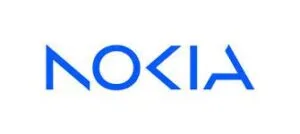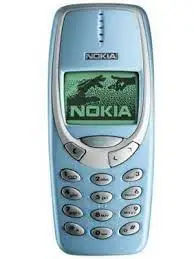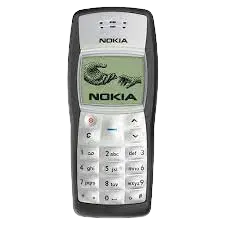Nokia’s New Logo, design, objective, facts, Nokia’s failure
Nokia changed its logo first time in the last 60 years as the company is going through a major transformation to start a new era.
Nokia’s New Logo
The Blue colour of the logo has been withdrawn and Nokia’s New Logo was released after Pekka Lundmark took over as the new CEO of the company in 2020. The action was taken as per his strategy with three stages, rest, accelerate and scale. The head office is situated in Espoo, Finland.

Nokia’s new logo is made up of five distinct shapes that create the word NOKIA. The original logo’s characteristic blue colour has been replaced with a variety of colours depending on the application.
Nokia’s New Logo

With NOKIA’S NEW LOGO, NOKIA is sending information to the international market. NOKIA’S NEW LOGO says NOKIA has emerged as a technology company. According to NOKIA, the world is of the assumption that the company produces only smartphones. But it is not so. NOKIA is into the technology business and not the Smartphone business. To deliver this to the international market, NOKIA’S NEW LOGO has been introduced.
NOKIA’S NEW LOGO swaps the classic blue with a range of colors, and features five unique shapes forming the word Nokia. The old logo made people think of smartphones, CEO Pekka Lundmark told Reuters, while the new look and feel signifies that Nokia has emerged as a “business technology company.”
Interesting Facts about Nokia
Nokia, previously well known for its phones Nokia originally started off as a paper production company in 1865 in Finland. The company was established by mining engineer Fredrik Idestam on the banks of the Tammerkoski rapids in the town of Tampere. In 1868, Idestam built a second mill near the town of Nokia.
This mill was then transformed into a share company, in 1871 by Idestam, with the help of his close friend Leo Mechelin. They renamed it the Nokia Company. The name ‘Nokia’ is derived from the river Nokianvirta, on the banks of which the company was established. Nokianvirta itself was named after an old Finnish word, which originally meant sable. Before moving their business into electronics in 1960, Nokia Company expanded to working with rubber, electricity, and cables.
Nokia rubber boots become a bona fide design classic, still on sale to this day – though the company no longer makes them. The well-known ‘Nokia tune’, which was the most commonly known indentifying feature of the phone is said to be based on ‘Gran Vals’, a 19th century guitar work of a Spanish musician, Francisco Tarrega. This work was well known as the Nokia tune, since people found the original name hard to remember.
Around 1998, Nokia also renamed the tune as the ‘Nokia tune’ in their phones. Nokia is very careful about not including the number 4 in any Nokia handset model that is retailing in Asia, as the number is considered to be unlucky by many in this particular region. According to the Fortune list 2006 survey, Nokia was the 20th most Admirable company in the World. Nokia smartphones today pride themselves on the quality of their camera. It is therefore interesting to know that Nokia is currently the world’s largest digital camera manufacturer.
The sales of the company’s camera-equipped phones have exceeded those of any conventional camera manufacturer. The world’s first commercial GSM call was made in 1991 in Helsinki over a Nokia-supplied network, by Prime Minister of Finland Harri Holkeri, using a Nokia phone. It is popularly believed that the ‘Special’ tone available in Nokia phones, as a SMS tone, is actually Morse code for SMS. The ‘Ascending’ SMS tone is Morse code for ‘Connecting People’, which is Nokia’s tagline. The world’s first satellite call was made in 1994, using a Nokia GSM handset.
Nokia failed in India because after 2007, Nokia failed to sense that trends were changing. It ignored the changing demands and needs of the customers. Also, its inability to cope with the severe competition and its dependence on a more complex operating system, Symbian, made its position shaky in India. It failed in its organizational structure and interdepartmental communication. Insufficient coordination among departments often leads to a variety of operational issues.
In Nokia’s case, it led to many delays in the development of their OS. Nokia’s first touch screen phone was the Nokia 7710, launched in 2004. In May 2007, Nokia’s 1100 handset was the best-selling mobile phone of all time and the world’s top-selling consumer electronics product. Nokia 8810 was the first phone to come without an external antenna. It was launched back in 1998 as a flagship Nokia phone and was also the most luxurious Nokia mobile phone of its time. It was also one of the first phones to come with Chrome plating. Finland is the first country to publish its own set country themed emojis and Nokia 3310 is one of such 56 emojis.

Nokia 3310 emoji is named as “UNBREAKABLE”as it is well known for its durability. Nokia 6110 was announced in December 1997 and was the first phone that came with popular “Snake”game pre-installed. It was also the first game with a two-player mode on a mobile phone. Nokia 7650 launched in 2002 was the first Nokia phone to have a built-in camera. It had a 0.3MP camera which could capture images at 640×480 resolution. This phone marked the start of Nokia camera phones. Nokia was always ahead of the competition when it came to camera tech in cell phones.
Nokia phones are well known for their cameras. Nokia 808 PureView and Nokia Lumia 1020 with their 41MP Camera Sensors are great examples of Nokia’s expertise in mobile phone cameras. The Lumia name is derived from the partitive plural form of the word Lumi which means snow in the Finnish language. According to the data, the 2003 Nokia 1100model is the most successful, selling a total of 250 million units. Despite only being released in 2014, the iPhone 6/6+ has quickly become the second most in-demand phone, selling over 222 million units
Nokia’s FAILURE
- In October 1998, Nokia became the best-selling mobile phone brand in the world;
- Nokia’s operating profit went from $1 billion in 1995 to almost $4 billion by 1999;
- The best-selling mobile phone of all time, the Nokia 1100, was created in 2003.

Nokia 1100 In 2007, Apple introduced the iPhone;
- By the end of 2007, half of all smartphones sold in the world were Nokias, while Apple’s iPhone had a mere 5 per cent share of the global market;
- In 2010 Nokia launched the “iPhone killer” but failed to match the competition;
- The quality of Nokia’s high-end phones continues to decline;
- In just six years, the market value of Nokia declined by about 90%
- Nokia’s decline accelerates by 2011 and is acquired by Microsoft in 2013.
- Nokia’s demise from being the world’s best mobile phone company to losing it all by 2013 has become a case study discussed by teachers and students in business management classes.
Study About Nokia’s Failure
In order to understand its rapid downfall from its position as a world-dominant and innovative technology organization, Tim O. Vuori, assistant professor in strategic management at Aalto University and Qui Huy, Professor of Strategy at INSEAD Singapore conducted a qualitative study. The results were published in the 2015 paper Distributed Attention and Shared Emotions in the Innovation Process: How Nokia Lost the Smartphone Battle.
The study consisted of interviewing 76 Nokia top and middle managers, engineers and external experts and conducting in-depth investigations.
Observations by Mr Huy and Mr Vuori
- At that time Nokia suffered from organisational fear;
- The organisational fear was grounded in a culture of temperamental leadersand frightened middle managers;
- The middle management was scared oftelling the truth because they feared being fired;
- Top managers were afraid ofthe external environment and not meeting their quarterly targets;
- Executives were afraid to publicly acknowledge theinferiority of Symbian, Nokia’s operating system;
- They knew it would take several years to develop a better operating system that could compete with Apple’s iOS;
- Top executives were afraid oflosing investors, suppliers and customers if they acknowledged their technological inferiority to Apple;
- Top managers intimidated middle managers by accusing them of not being ambitious enough to meet their goals;
- Top management was lied toby middle management who felt telling the truth was useless;
- Top managers lackedtechnical competence which influenced how they could assess technological limitations during goal setting; by comparison, the top engineers at Apple were all engineers;
- Instead of allocating resources to the achievement of long-term goals such as developing a new operating system, Nokia management decided to develop new phone devices for short-termmarket demands.
Microsoft learned from Nokia’s mistakes and changed its culture.
In 2014, Satya Nadella became the current CEO of Microsoft, following Bill Gates and Steve Ballmer.
The most important change that Satya brought to Microsoft was shifting the company’s culture. He says that his job as CEO is to create a culture that focuses on listening, learning, and harnessing individual passions and talents. Satya also placed employer empowerment at the core of Microsoft’s culture.
Company culture is not to be taken lightly. In fact company culture is a major factor that contributes to the company’s development and ability to compete and be successful.
Company culture starts at the top and grows at the bottom. It includes mission, values, environment, ethics, expectations, overall mood, goals etc. But unless the company’s leadership fully embraces them, they are just beautiful but empty words. Leaders must embody the company’s values and be role models for their employees.
We hope that Nokia’s New Logo will definitely bring new challenges for the company going ahead as its been 60 years Nokia lovers were in touch with the old logo, but as the company is restructuring its processes we wish Nokia the very best.
Hope you liked the article by read4knowledge about Nokia’s New Logo. For regular updated please like, comment and subscribe.
